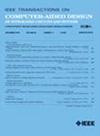基于多簇原位FHE加速系统的大参数NTT优化
IF 2.9
3区 计算机科学
Q2 COMPUTER SCIENCE, HARDWARE & ARCHITECTURE
IEEE Transactions on Computer-Aided Design of Integrated Circuits and Systems
Pub Date : 2025-03-26
DOI:10.1109/TCAD.2025.3555191
引用次数: 0
摘要
完全同态加密(FHE)实现了高级别安全性,但计算工作量很大,需要软件和硬件协同设计来实现积极的加速。最近关于HE评估专用加速器的工作在支持轻量级RNS-CKKS应用方面取得了重大进展,特别是那些具有高密度内存计算技术的应用。为了满足更广泛应用的更高计算需求,本文提出了多集群HE加速系统(MCHEAS),这是一个由多个原位HE处理加速器组成的加速系统,每个加速器作为一个集群协同执行大参数RNS-CKKS评估。MCHEAS的优化策略包括同步、抢占式交换、平方对角线和奇偶索引分离。利用这些策略编译数论变换(NTT)系数的计算和传输,优化了集群间的数据交换,这是NTT计算的主要瓶颈。评估表明,在1 GHz下,在不同的集群间数据传输带宽下,我们的方法将NTT计算速度提高了26.40%至51.75%。MCHEAS还将计算单元利用率提高了10.30% ~ 33.97%,最大峰值利用率高达99.62%。MCHEAS在涉及NTT的HE操作中实现了17.63%到34.67%的加速,在演示应用程序中实现了15.12%到30.62%的加速,同时在应用程序执行期间将计算单元的利用率提高了5.18%到21.87%。此外,在特定的集群间数据传输带宽下,我们将MCHEAS与SOTA设计进行了比较,在应用中实现了高达81.45倍的区域效率。本文章由计算机程序翻译,如有差异,请以英文原文为准。
MCHEAS: Optimizing Large-Parameter NTT Over Multicluster In-Situ FHE Accelerating System
Fully Homomorphic encryption (FHE) enables high-level security but with a heavy computation workload, necessitating software-hardware co-design for aggressive acceleration. Recent works on specialized accelerators for HE evaluation have made significant progress in supporting lightweight RNS-CKKS applications, especially those with high-density in-memory computing techniques. To fulfill higher computational demands for more general applications, this article proposes multicluster HE accelerating system (MCHEAS), an accelerating system comprising multiple in-situ HE processing accelerators, each functioning as a cluster to perform large-parameter RNS-CKKS evaluation collaboratively. MCHEAS features optimization strategies including the synchronous, preemptive swap, square-diagonal, and odd-even index separation. Using these strategies to compile the computation and transmission of number theoretic transform (NTT) coefficients, the method optimizes the intercluster data swaps, a major bottleneck in NTT computations. Evaluations show that under 1 GHz, with different intercluster data transfer bandwidths, our approach accelerates NTT computations by 26.40% to 51.75%. MCHEAS also improves computing unit utilization by 10.30% to 33.97%, with a maximum peak utilization rate of up to 99.62%. MCHEAS achieves 17.63% to 34.67% speedups for HE operations involving NTT, and 15.12% to 30.62% speedups for demonstrated applications, while enhancing the computing units’ utilization by 5.18% to 21.87% during application execution. Furthermore, we compare MCHEAS with SOTA designs under a specific intercluster data transfer bandwidth, achieving up to $81.45\times $ their area efficiencies in applications.
求助全文
通过发布文献求助,成功后即可免费获取论文全文。
去求助
来源期刊
CiteScore
5.60
自引率
13.80%
发文量
500
审稿时长
7 months
期刊介绍:
The purpose of this Transactions is to publish papers of interest to individuals in the area of computer-aided design of integrated circuits and systems composed of analog, digital, mixed-signal, optical, or microwave components. The aids include methods, models, algorithms, and man-machine interfaces for system-level, physical and logical design including: planning, synthesis, partitioning, modeling, simulation, layout, verification, testing, hardware-software co-design and documentation of integrated circuit and system designs of all complexities. Design tools and techniques for evaluating and designing integrated circuits and systems for metrics such as performance, power, reliability, testability, and security are a focus.

 求助内容:
求助内容: 应助结果提醒方式:
应助结果提醒方式:


